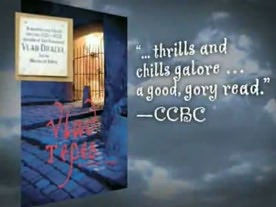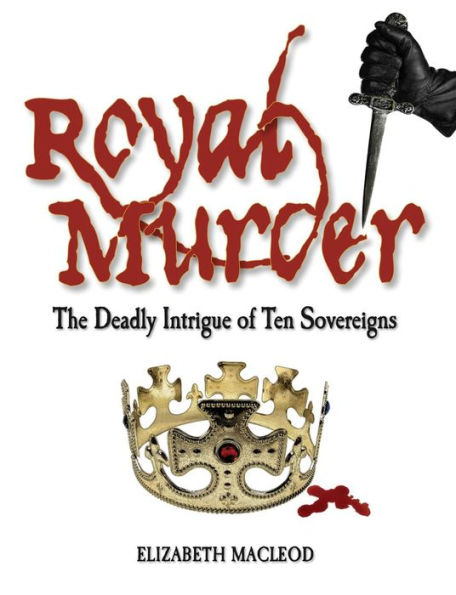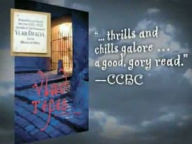
Royal Murder: The Deadly Intrigue of Ten Sovereigns
128
Royal Murder: The Deadly Intrigue of Ten Sovereigns
128Paperback
-
PICK UP IN STORECheck Availability at Nearby Stores
Available within 2 business hours
Related collections and offers
Overview

Product Details
| ISBN-13: | 9781554511273 |
|---|---|
| Publisher: | Annick Press, Limited |
| Publication date: | 09/30/2008 |
| Pages: | 128 |
| Product dimensions: | 7.30(w) x 9.40(h) x 0.50(d) |
| Lexile: | 1030L (what's this?) |
| Age Range: | 9 - 11 Years |
About the Author
Elizabeth MacLeod is the award-winning author of more than 20 non-fiction books for children, including biographies of Harry Houdini and Helen Keller. She lives in Toronto.
Read an Excerpt
Excerpt
Murder Most Royal
What's that in the shadow of the castle? That noise outside the king's office -- is it a bomb? Is that the smell of gunpowder in the princess's dressing room? Who's lurking behind that throne?
Throughout the centuries, emperors, queens, tsars, and duchesses have lived with great wealth, responsibility -- and danger. Murderers skulk everywhere, waiting for a chance to eliminate their royal targets. No matter how well monarchs are protected, they are never safe from a determined assassin. With so much power at stake, no wonder there are many fascinating, strange, and frightening tales of royal murders.
The main reason someone murders a royal is to grab the throne and assume all the wealth and power that go with it. The monarch's killer might be a subject -- either a commoner or a noble -- or another ruler. Cleopatra, Queen of Egypt, killed her royal brothers and sisters. Richard III of England has been accused of killing his brothers, nephews, and many others. Wallachia's Prince Vlad the Impaler -- better known today as Dracula -- killed his country's nobles, whom he judged untrustworthy. He also executed peasants who, in his opinion, didn't work hard enough.
Power makes some monarchs extremely distrustful of others, even paranoid. For that reason, one royal crime can easily lead to another. Mary, Queen of Scots and her allies are believed to have planned and successfully carried out the murder of her husband. Mary went on to hatch plots against her cousin, England's Queen Elizabeth I. Happily for Elizabeth, none of Mary's attempts were successful but that didn't stop her from trying.
It's easy to see how jealousy, greed, and hatred can result in a royal murder, but love can be just as lethal. Prince Dipendra of Nepal went on a killing rampage when he wasn't allowed to marry his chosen bride. Mary, Queen of Scots may have disposed of her husband so she could marry her lover -- who just happened to be the likely murderer. King Faisal of Saudi Arabia was killed by his nephew because the king refused to punish the young man's beloved brother.
The assassin of Empress Elisabeth of Hungary didn't care which monarch he stabbed, as long as he took the life of someone who'd inherited the wealth and privilege he'd never experienced. Rebels are also willing to kill to bring about change. Sometimes mass uprisings occur when a large group of rebels feels oppressed and resents that a monarch has been born into power. This type of killing was especially popular in the late 1700s, with the deaths by guillotine of Louis XVI of France; his queen, Marie Antoinette; and other French nobles.
Killing royals for political reasons has been especially common since the late 1800s. Without a leader, a country can be thrown into chaos.
Assassination was also seen as a way of bringing an end to the monarchy. It worked in Russia in 1918, with the execution of the czar and his family. Murdering monarchs has changed the course of history and affected the fortunes of countries and continents.
Once an assassin chooses a target, he or she must then choose a weapon. For a quick, quiet royal murder, a killer could choose among suffocation, poison, or a quick jab with a dagger. All of these methods required close access to the victim and steely nerves. As technology became more sophisticated, so did a murderer's choice of weapons. Guns, bombs, and grenades were added to the arsenal. They were effective and didn't require such close proximity to the victim. And they could have earth-shattering results: Austrian Archduke Franz Ferdinand's assassination in 1914 plunged the world into the First World War.
At one point, beheading was an effective and public way to murder a monarch. But royals also favored public forms of execution to send a harsh message to their people. Vlad the Impaler was horrifyingly inventive in the ways he found to murder people who displeased him. For hundreds of years, events such as be headings and hangings were considered entertainment.
Some royal murderers have sought personal celebrity or have killed to raise awareness for a cause. Most of the assassination attempts against Queen Victoria were made by fame-seekers carrying guns that weren't even loaded. In more recent times, murdering a royal has sometimes been used to draw attention to a country's political situation. The illegal Irish Republican Army blew up Louis Mountbatten in 1979, not because he was powerful, but because he represented England, the country the terrorists felt was occupying their home.
If there is a mystery involved with a royal murder, there are often surprising developments. A person claiming to be the dead sovereign may appear years later, only to send experts scrambling to prove or disprove his or her identity. Impersonators of almost every member of the murdered Russian royal family came forward after the Russian Revolution. These amazing reappearances are often accompanied by tales of a sympathetic executioner who helped the "royal" escape, a loss of memory, or some other bizarre twist. In past centuries pretenders fooled many people, but now DNA matching can quickly determine whether a person is who he or she claims to be.
Some royal murders remain unsolved. For instance, did Boris III, czar of Bulgaria, die of natural causes -- or did his refusal to cooperate with Adolf Hitler provoke the infamous Nazi leader to have Boris killed? And if Richard III of England didn't kill the two young princes who stood between him and the throne, who did? Despite advances in crime detection technology, it's still difficult to distinguish fact from fiction in many royal murders.
Get ready to read about some of history's deadliest assassins and most murderous royals. Their stories are shrouded in mystery or are full of incredible coincidences, while a number are shockingly grisly. You'll find out about murders that occurred more than 2,000 years ago, as well as others that are uncomfortably recent.
Some of these royals happened to be in the wrong place at the wrong time. Other monarchs killed so many of their subjects that a violent or early death should have come as no surprise to them. Whatever the case, in the stories that follow, you'll encounter both men and women who have been driven to commit the most violent act of all: murder.
Table of Contents
Table of Contents
Murder Most Royal
CLEOPATRA: Murder in the Family
VLAD TEPES: Blood-Crazed Avenger
RICHARD III: Did He or Didn't He?
MARY I; ELIZABETH I; AND MARY, QUEEN OF SCOTS: Killing Cousins
LOUIS XVI AND MARIE ANTOINETTE: Too Little, Too Late
EMPRESS ELISABETH: Beautiful Victim of Fate
THE ROMANOVS: Russia's Doomed Royals
Modern Murders
Timeline
Further Reading
Main Sources
Picture Sources and Acknowledgments
Index
Related Subjects
Videos


